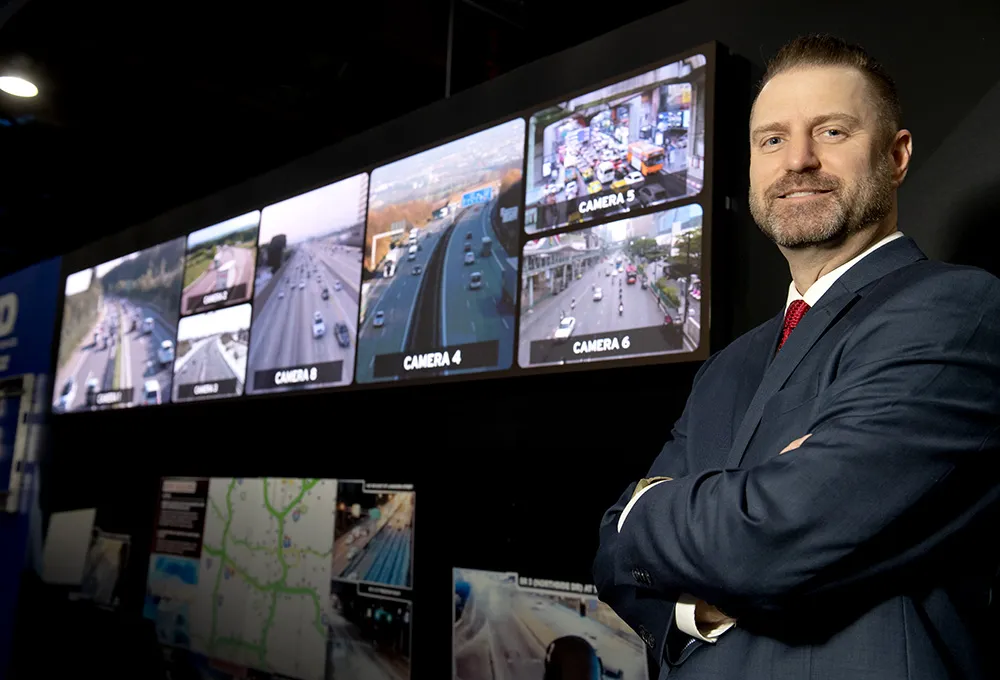Audio-visual systems integrator Electrosonic has recently installed a dynamic display system (DDS) at Highways England’s Eastern Regional Control Centre in South Mimms. Comprising of LED illuminated cubes, the new DDS technology provides a solution that is virtually maintenance free, energy efficient and suitable for 24/7 usage.
Electrosonic installed an 8x3 array of Mitsubishi Electric 67PE78, 67-inch SXGA+ LED illuminated cubes, which are brighter, of higher resolution and use less power than their pre
June 1, 2016
Read time: 2 mins
Audio-visual systems integrator 6683 Electrosonic has recently installed a dynamic display system (DDS) at 8101 Highways England’s Eastern Regional Control Centre in South Mimms. Comprising of LED illuminated cubes, the new DDS technology provides a solution that is virtually maintenance free, energy efficient and suitable for 24/7 usage.
Electrosonic installed an 8x3 array of7874 Mitsubishi Electric 67PE78, 67-inch SXGA+ LED illuminated cubes, which are brighter, of higher resolution and use less power than their predecessor. Additionally, they do not require any consumables such as projector lamps that would need regular replacement.
The cubes have a 4:3 aspect ratio that matches the camera images exactly, while their automatic colour balancing feature ensures that all cubes in the array give a uniform performance. They are energy efficient, low maintenance and can support 24/7 usage. The cubes also benefit from an extremely narrow 1-mm bezel, which presents a virtually seamless image when magnified across a 2x2 cube array.
The DDS can show any combination of video or images across the array, determined by any one of the 20 operator positions. The vast majority of images are derived from Highways England’s network of 870 cameras located around the regions roads. In addition, images from other regions, roadwork cameras, Transport for London and broadcast images can also be selected.
The display receives its inputs from an Eyevis Netpix NPX-4800 video wall processor, chosen for its flexibility and capability of dealing with many source types. It also met Highways England’s requirement that the processor should be able to process directly H264 compressed CCTV images delivered over IP, according to ONVIF (Open Network Video Interface Forum) format.
Electrosonic installed an 8x3 array of
The cubes have a 4:3 aspect ratio that matches the camera images exactly, while their automatic colour balancing feature ensures that all cubes in the array give a uniform performance. They are energy efficient, low maintenance and can support 24/7 usage. The cubes also benefit from an extremely narrow 1-mm bezel, which presents a virtually seamless image when magnified across a 2x2 cube array.
The DDS can show any combination of video or images across the array, determined by any one of the 20 operator positions. The vast majority of images are derived from Highways England’s network of 870 cameras located around the regions roads. In addition, images from other regions, roadwork cameras, Transport for London and broadcast images can also be selected.
The display receives its inputs from an Eyevis Netpix NPX-4800 video wall processor, chosen for its flexibility and capability of dealing with many source types. It also met Highways England’s requirement that the processor should be able to process directly H264 compressed CCTV images delivered over IP, according to ONVIF (Open Network Video Interface Forum) format.








